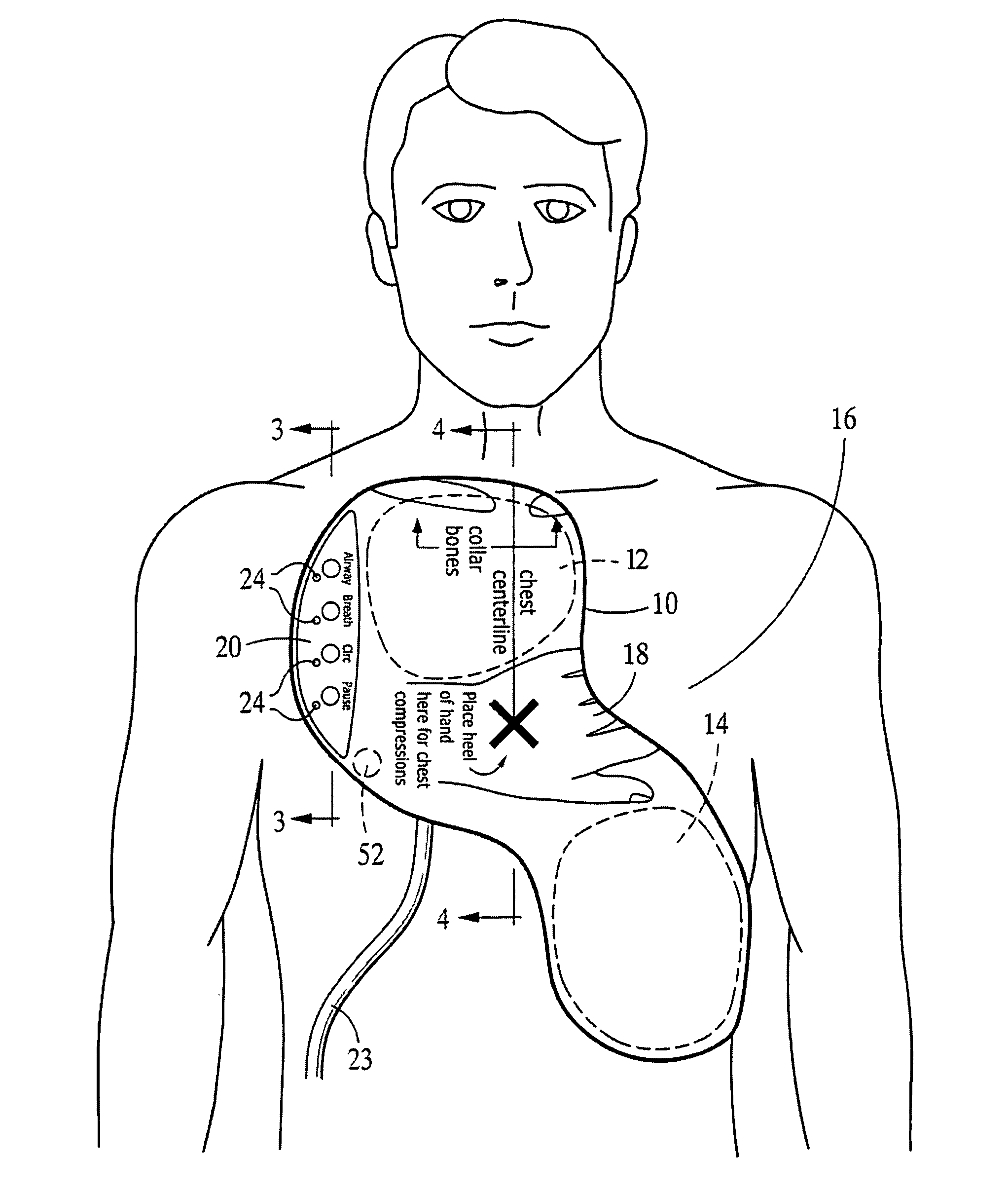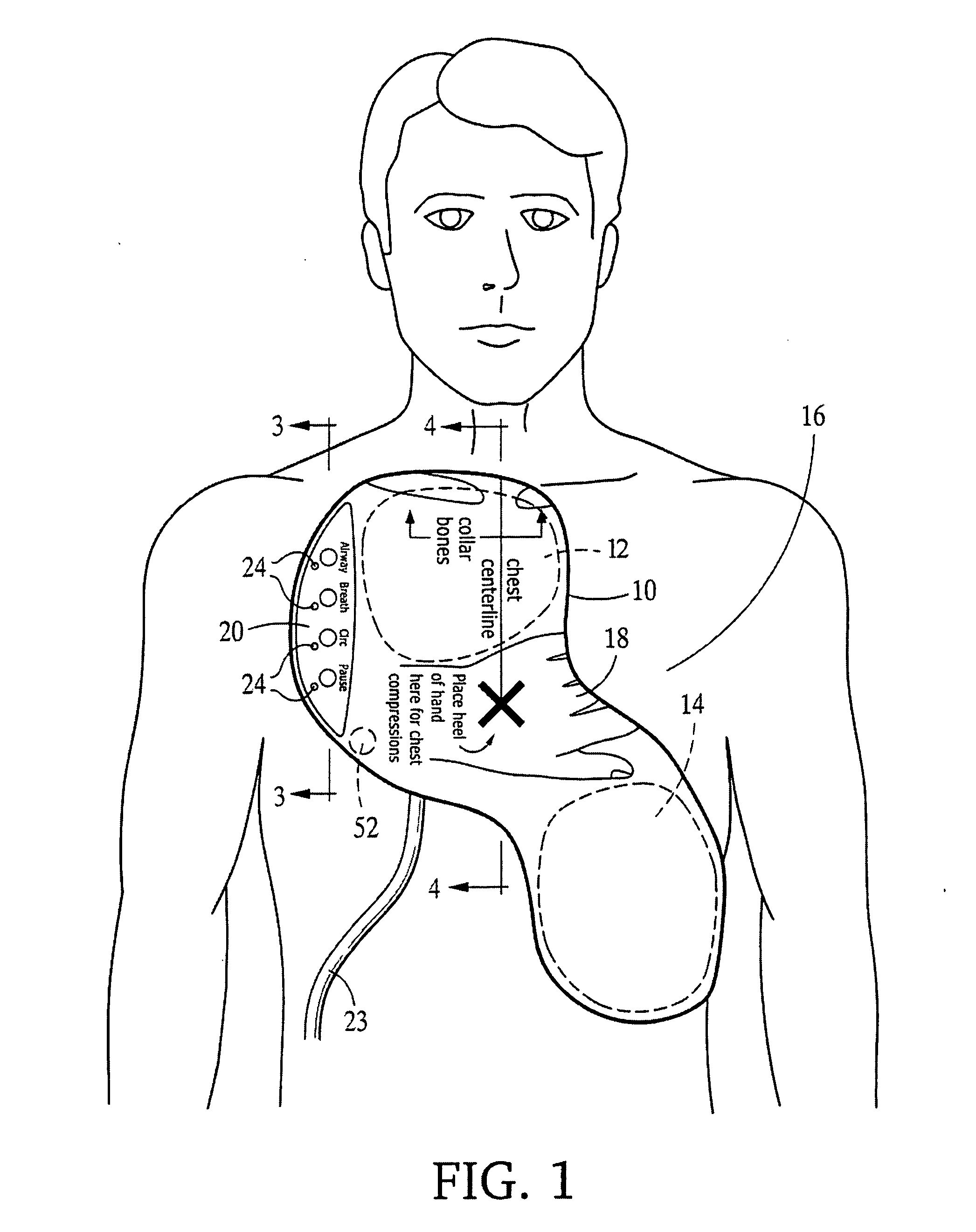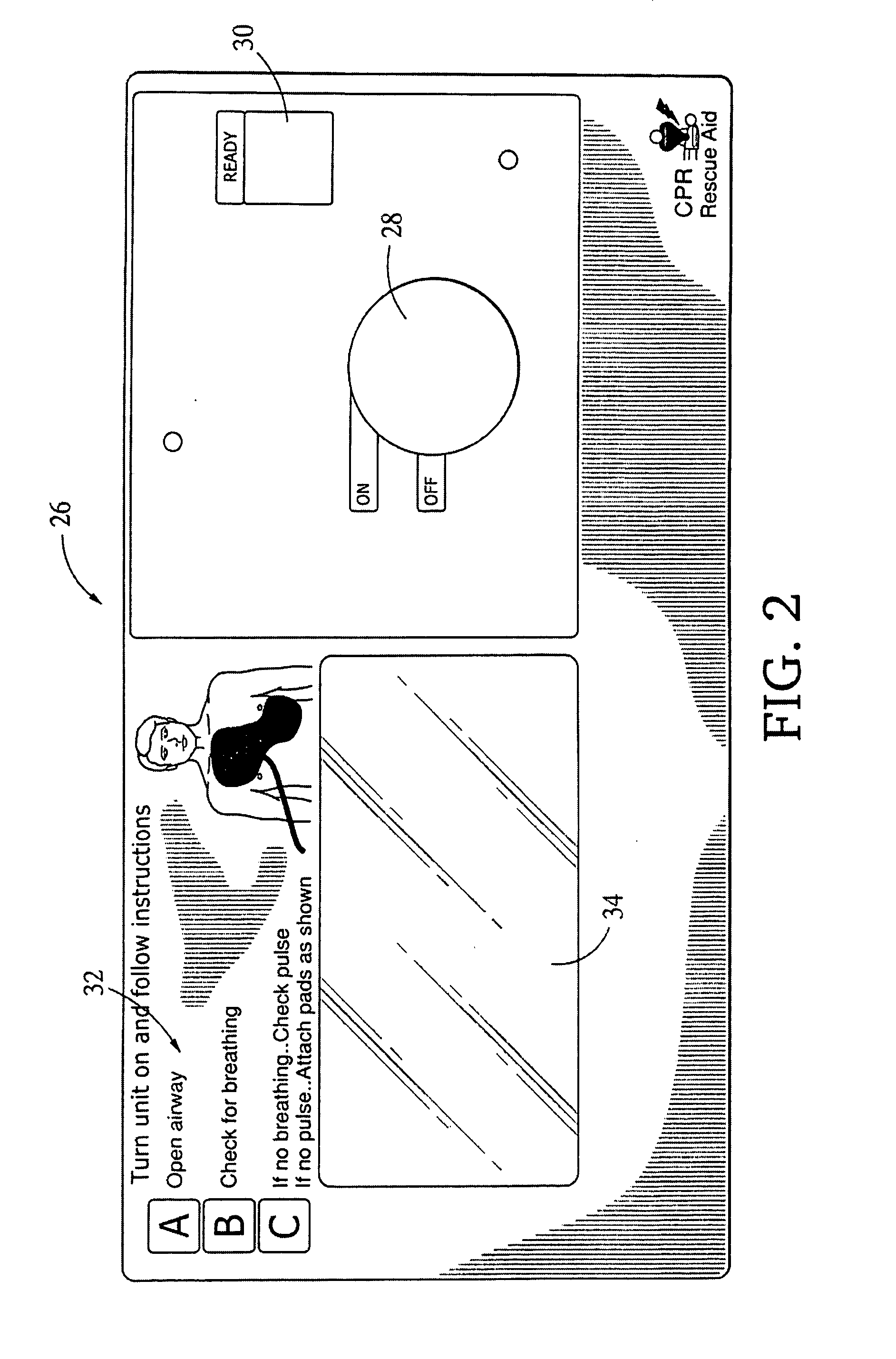Integrated Resuscitation
a resuscitation system and integrated technology, applied in the field of resuscitation systems, can solve the problems of low survival rate, patient cannot remain alive with the rhythm, lay providers can be easily intimidated by an aed, etc., and achieve the effect of reducing cardiac arrest fatality rate, reducing cost, and widening distribution
- Summary
- Abstract
- Description
- Claims
- Application Information
AI Technical Summary
Benefits of technology
Problems solved by technology
Method used
Image
Examples
Embodiment Construction
[0037] There are a great many possible implementations of the invention, too many to describe herein. Some possible implementations that are presently preferred are described below. It cannot be emphasized too strongly, however, that these are descriptions of implementations of the invention, and not descriptions of the invention, which is not limited to the detailed implementations described in this section but is described in broader terms in the claims.
[0038] With reference to FIG. 1, a defibrillation electrode pad 10, which includes high-voltage apex defibrillation electrode 12 and high-voltage sternum defibrillation electrode 14, is placed on the patient's chest 16 and includes a region 18 on which a user may press to perform CPR. Legends on pad 10 indicate proper placement of the pad with respect to the patient's collarbones and the chest centerline and the proper placement of the heel of the rescuer's hand.
[0039] A low-profile button panel 20 is provided on the electrode as...
PUM
 Login to View More
Login to View More Abstract
Description
Claims
Application Information
 Login to View More
Login to View More - R&D
- Intellectual Property
- Life Sciences
- Materials
- Tech Scout
- Unparalleled Data Quality
- Higher Quality Content
- 60% Fewer Hallucinations
Browse by: Latest US Patents, China's latest patents, Technical Efficacy Thesaurus, Application Domain, Technology Topic, Popular Technical Reports.
© 2025 PatSnap. All rights reserved.Legal|Privacy policy|Modern Slavery Act Transparency Statement|Sitemap|About US| Contact US: help@patsnap.com



